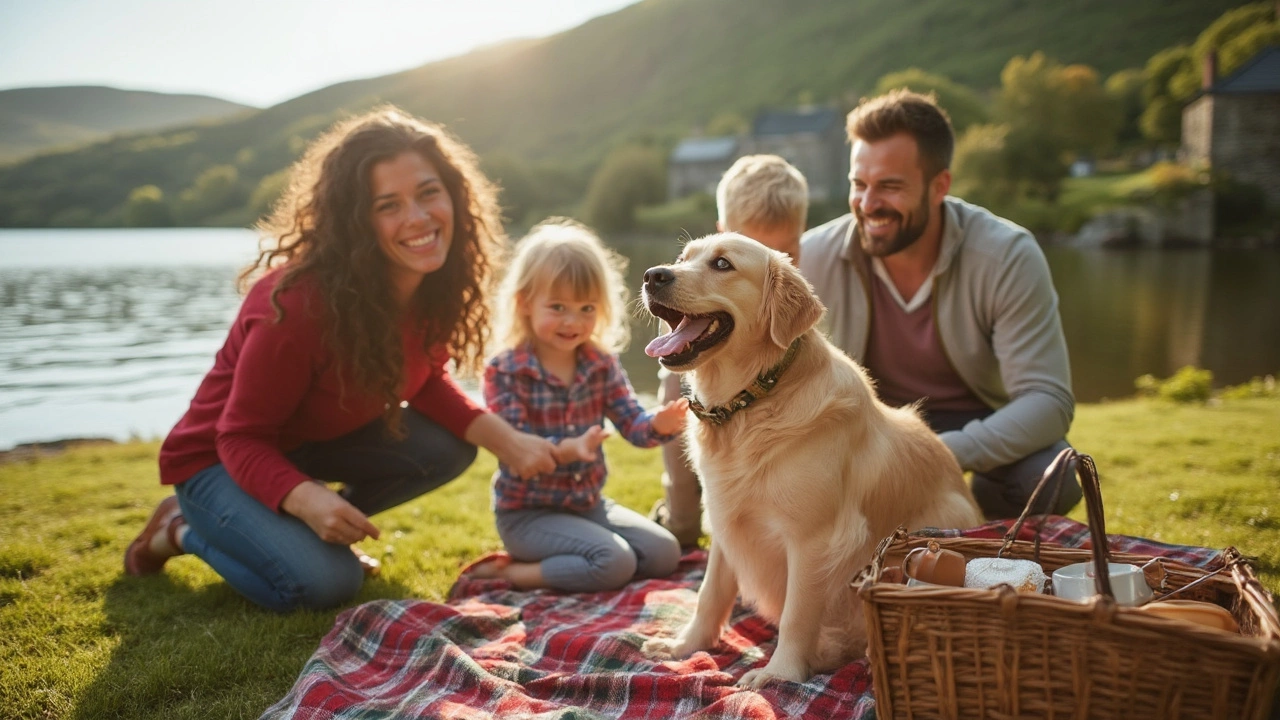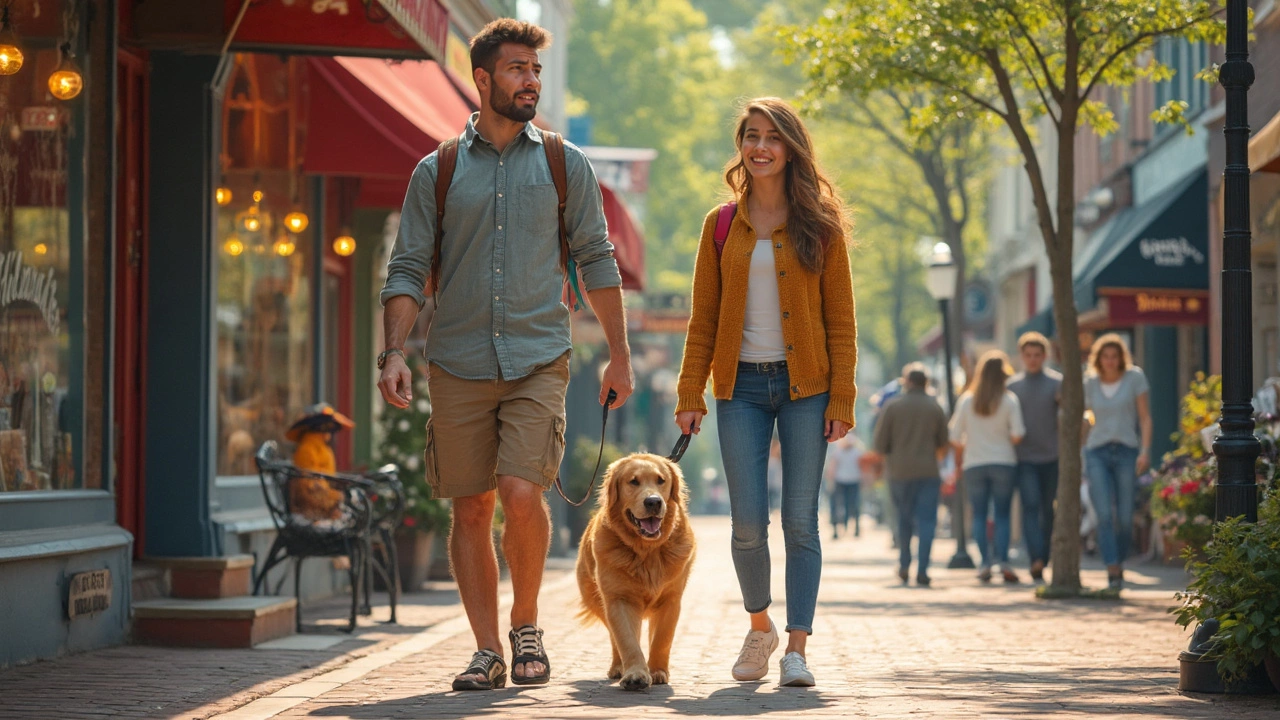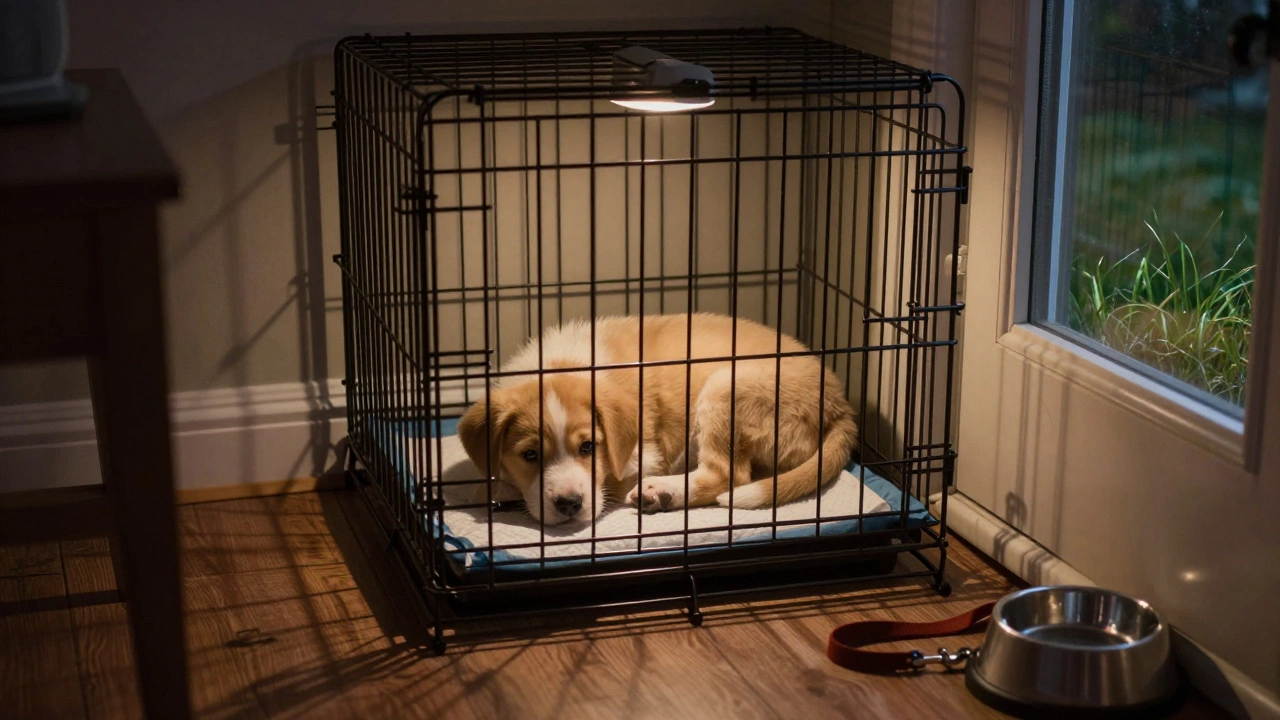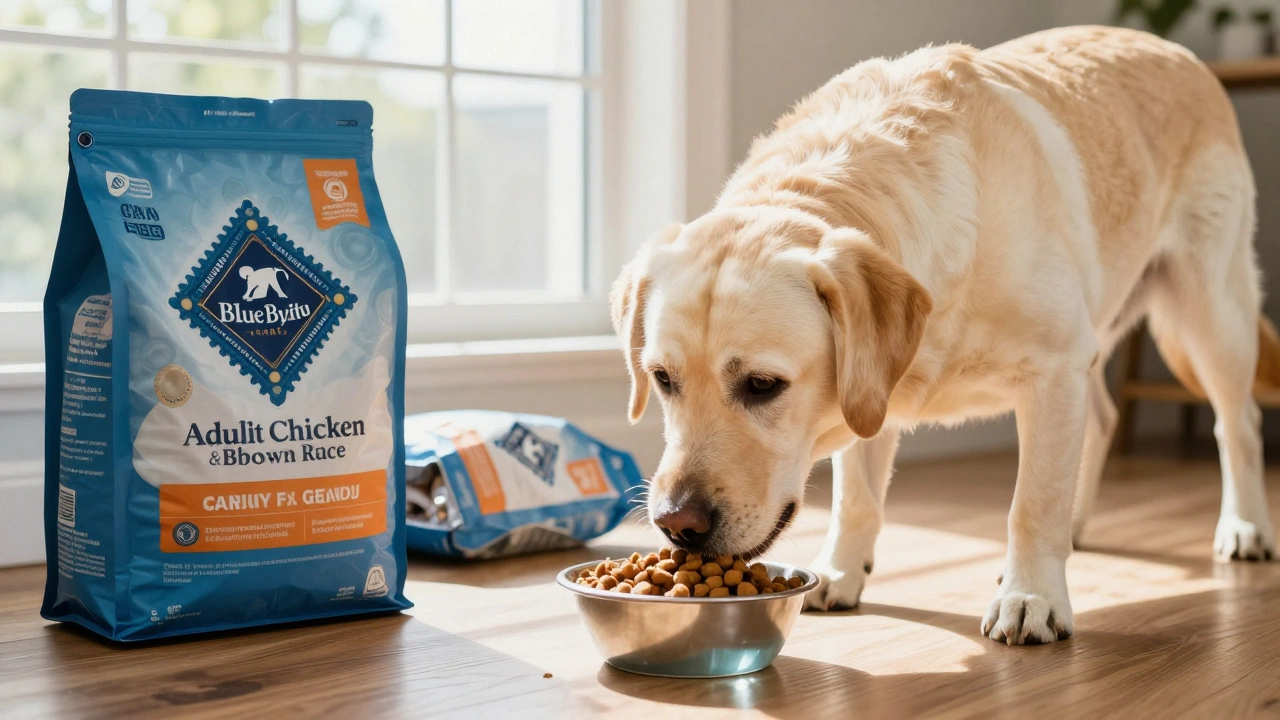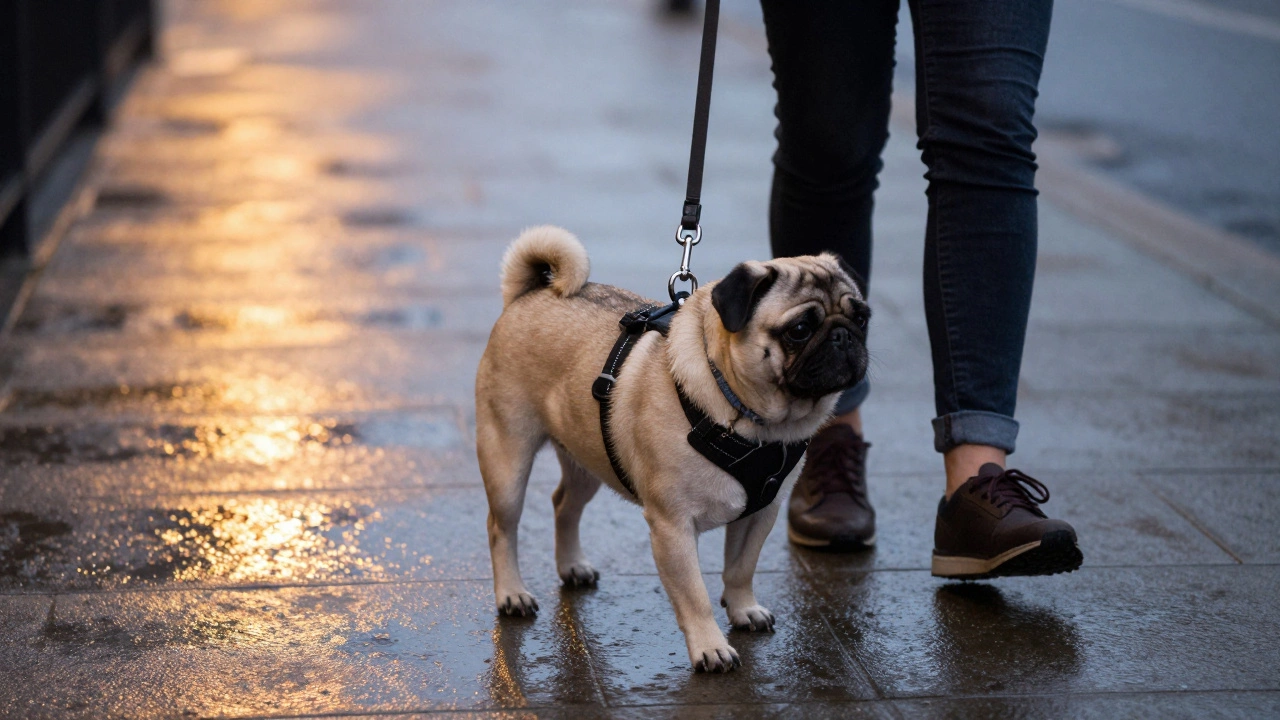Ever looked at your dog in the backseat, tongue out, and wondered if he’s actually having fun or just plotting a home escape? We like to imagine our pups loving every minute of being away with us, but the truth is—dogs see holidays a little differently. Some thrive on adventure. Others would rather nap in their usual corner at home.
It comes down to knowing your dog. Those happy, bouncy tail wags don’t lie, but yawns, panting, or hiding under the hotel bed? That’s a different story. We’ve all brought our dog along and ended up wishing we’d asked them what they wanted. You can actually spot the signs if you know what to look for. Recognizing these clues means less stress for both of you, turning your trip into fun instead of drama.
- What Dogs Really Think About Holidays
- Reading Your Dog’s Body Language
- Travel Stress: Signs and Solutions
- Picking the Perfect Dog-Friendly Spot
- Packing Essentials for Your Pooch
- Mistakes to Avoid on Dog Holidays
What Dogs Really Think About Holidays
Not every dog goes wild for a road trip, even if their humans have packed the treats and tennis balls. Research from 2023 by the UK’s Dogs Trust found that around 47% of pet owners believe their dog feels more anxious when taken somewhere new. This isn’t always bad—a little excitement is fine—but too much change can overwhelm some pups.
Dogs rely on routine. When they’re thrown into a new place, with unfamiliar smells and different noises, some get nervous. This doesn’t mean dogs can’t enjoy holidays, though. Many thrive on new experiences—especially active breeds like border collies, labs, and spaniels. These guys often love hiking, swimming, or just tagging along every step of the way. Shyer or older dogs might just prefer their home sofa.
It usually comes down to a few key things:
- How confident and social the dog is
- How much the dog trusts you in new places
- What the surroundings are like—busy hotel vs. quiet cottage
- How prepared you are for their comfort and safety
Ever noticed your dog clinging to you when you get somewhere new, or maybe acting hyper? That’s because dogs read environment shifts way faster than we do. According to a 2022 study by Petplan, 3 out of 5 dogs show more "clingy" behavior on trips.
It’s not always doom and gloom. Plenty of dogs absolutely have a blast on trips. Look at the numbers below, which cover some real findings about dogs’ experiences during travel:
| How Dogs Responded on Holiday | Percentage of Owners Reporting |
|---|---|
| More playful than at home | 36% |
| Anxious/restless | 35% |
| No noticeable change | 22% |
| Less active/hiding | 7% |
The bottom line? Some dogs love a dog holiday almost as much as a human one. Others get worried and would much rather stay put. You know your dog best, but watching their body language and trying a short weekend getaway before a big trip can help you figure it out. If they’re keen on heading out the door, that’s your green light to go all in on pet-friendly vacations.
Reading Your Dog’s Body Language
If you’re taking your dog on holiday, you need to know how to “read” them. Dogs can’t say, “Hey, this is awesome!” or, “Can we go home?” but their body language tells you plenty. Start by paying attention to their tail. A relaxed wag at mid-height usually means your dog feels good. But if that tail tucks down and hugs their belly, something’s off—maybe they’re scared or overwhelmed.
Watch their ears and eyes. Ears that perk up or flop loosely suggest they’re curious and happy. Pinned-back ears or intense, wide eyes? That’s a sign your dog’s feeling anxious or unsure about new surroundings. Some dogs show stress by yawning, licking their lips, or pacing. These aren’t just normal habits—they often mean your dog is trying to calm themselves down in a new environment.
Look for these positive signs that your dog is enjoying your dog holidays adventure:
- Relaxed posture—their body isn’t stiff or crouched.
- Playful bow (front elbows down, bum in the air).
- Gentle panting paired with a soft expression.
- Wagging tail and normal interest in smells or toys.
Red flags to watch out for:
- Refusing food or turning away treats they usually love.
- Hiding behind furniture or under beds.
- Constantly whining, shaking, or trying to bolt.
- Pacing nonstop or scratching at doors to get out.
Take a minute every few hours to check in with your pup. Their mood can change quickly, especially in new places. If the body language shifts from happy to tense, it’s time to give them a break, find a quiet spot, or even head home early if things just aren’t working. Being able to spot the difference makes trips better for everyone—especially your dog.
Travel Stress: Signs and Solutions
Not every dog loves car rides, hotel rooms, or unpredictable schedules. Even the most chill dog can get stressed when their routine is tossed out the window. It’s important to spot the difference between a dog just being excited and one that’s actually overwhelmed. Most stress in dogs shows up through their body, not just their bark.
Here are the top stress signs you should watch for during any dog holidays:
- Frequent yawning (not just sleepy, but anxious yawns)
- Pacing, whining, or panting when nothing exciting is happening
- Refusing food or treats they usually love
- Hiding under furniture or pressing close to your legs all the time
- Shedding way more than usual
- Digestive issues, like vomiting or diarrhea
- Tucking their tail, ear pinning, or showing the whites of their eyes
A recent survey from the Dog’s Trust charity in the UK found over 60% of owners noticed their dogs showed at least one stress sign when away from home. But with a few changes, you can seriously lower these anxiety levels.
| Trigger | How It Shows | What Helps |
|---|---|---|
| Long car rides | Panting, drooling, restlessness | Frequent breaks, fresh air, travel crate |
| New sleeping spot | Whining, pacing at night | Bring dog’s own bed and a fave toy |
| Loud places | Shaking, hiding | Stick to dog-friendly, calm venues |
| Unfamiliar people or pets | Growling, tail tucking | Slow, supervised introductions |
So how do you actually make your dog feel better on holiday? First, pack familiar stuff—bed, blanket, their usual food. Sticking to walk and meal schedules as much as you can helps a ton. You can also try calming sprays (like Adaptil), puzzle toys, and even short solo breaks if your dog just needs downtime away from crowds. If your dog really suffers, chat with your vet before your trip. Sometimes, a bit of training or a safe anti-anxiety aid does wonders.
Pay attention, and you’ll know if your dog is actually enjoying this adventure with you, or if they’d rather just be at home chewing their favorite bone. The main thing? Be patient and flexible—sometimes little changes go a long way.

Picking the Perfect Dog-Friendly Spot
Not all getaways are created equal when you're bringing your dog along. Some places roll out the red carpet for furry guests, while others barely tolerate them. If you want a happy trip, you’ve got to pick wisely from the start—and there’s more to it than just allowing dogs.
Look for spots with roomy walking areas, fenced yards, and plenty of shade. Dog-friendly beaches and parks are jackpot finds, but double-check the local rules. In the UK, for example, over 2,700 beaches welcome dogs, but some have seasonal restrictions—so check before you pack the frisbee.
“Check pet policies, even for so-called pet-friendly hotels,” advises Dr. Emily Wilson, a trusted UK veterinarian. “Some charge high fees, and a few have breed or size limits that surprise even experienced pet parents.”
Size matters—tiny cabins can feel stressful for bigger breeds. Lakes and trails are perfect if your pup loves the outdoors. Busy city breaks? Maybe not, unless you’ve got a dog that’s chill with crowds and noise. Don't just assume your dog will want what you want… city walks for you could mean anxiety for him.
Try to read reviews from other travelers with dogs. Their complaints and praises are gold. Fancy an Airbnb? Filter with pet-friendly, but message the host ahead anyway. Some add quirky rules ("no dogs on furniture" and "no barking after 7 pm") that can make or break your stay.
- Check if vet clinics are nearby—good to know if anything unexpected happens.
- Look for off-leash play zones or dog-specific activities in the area.
- Some spots now have doggy welcome packs (treats, bowls, beds)—always a bonus.
Let’s zoom in on a few stats for picking the right spot:
| Feature | % of Dog-Friendly Accommodations Offering |
|---|---|
| Fenced outdoor space | 62% |
| Dog beds provided | 48% |
| Nearby off-leash park | 39% |
| No extra pet fee | 22% |
One last tip: call ahead and confirm. Booking online is easy, but nothing beats a quick chat with a human who can answer real questions, especially about dog holidays. That simple call can save you a world of hassle when you arrive with your best friend in tow.
Packing Essentials for Your Pooch
If you want your dog holidays to go smoothly, what you pack matters just as much as where you’re staying. Forget something crucial, and you could end up searching for pet-friendly shops in the middle of nowhere or dealing with a cranky pup. Here’s what every owner should have on their packing checklist:
- Food & water bowls: Collapsible bowls save space and are easy to clean.
- Trusted food: Bring enough of the food your dog eats at home; sudden switches can mess with their stomach.
- Water bottle: A dedicated one for your dog keeps things safe and hygienic, especially while hiking or at the beach.
- Favorite bed or blanket: The familiar smell helps your dog settle in unfamiliar places.
- Lead, harness, and ID tags: Always double-check these and make sure your contact info is up-to-date.
- Poo bags: Can’t have too many.
- Toys & chews: Something to distract your dog while you check in or unpack.
- Towel: Dogs find mud and water even when you least expect it.
- Medications and basic first aid: Check with your vet if you need motion sickness pills or flea/tick protection for the trip location.
- Vaccination and microchip records: Some hotels and campsites will ask for these, especially if you’re crossing borders.
According to a 2024 survey by the British Veterinary Association, 21% of pet emergencies on holiday come from forgotten or wrong food—no one wants that sort of drama while away.
| Mistake | Percent of Owners (2024 survey) |
|---|---|
| Forgetting favorite toy | 15% |
| No proof of vaccinations | 12% |
| Running out of dog food | 21% |
| No ID tag or backup ID | 9% |
| No pet-safe first aid kit | 7% |
Even pros like Dr. Sarah Elliott from Vet Voice UK see simple things making a huge difference. As she puts it,
“Dogs can handle a lot, but a forgotten toy or favorite blanket can turn a fun trip into a nightmare. Packing familiar comforts helps them relax and keeps their routine stable.”
Last tip: keep a slim list clipped inside your dog’s travel bag. Cross it off as you load up. It’ll save you running back for a missing harness when you could already be on the beach tossing a ball.
Mistakes to Avoid on Dog Holidays
Even the most devoted dog people mess up a dog holidays trip. Not every mishap is obvious—sometimes it’s little stuff that makes a big difference to your dog’s experience. Let’s call out the usual slip-ups so your next break is a win for everyone, tail included.
First up: skipping a trial run. Many dogs aren’t used to long car rides or sleeping somewhere new. You wouldn’t take a friend camping without warning them. Same goes for your pup. Take a couple short drives or short stays at a friend’s house before the big trip.
- Ignoring vaccination and vet checks: Road trips (especially to countryside spots) expose dogs to different bugs and ticks. According to a 2023 UK survey, 31% of owners reported unexpected vet visits while away. Quick pre-trip check-ups can avoid headaches and bills.
- Packing mistakes: Leaving behind favorite toys, their usual food, or familiar bedding spells trouble. Dogs rely on smells and routines. Save yourself a midnight dash to a random shop by making a packing checklist ahead of time.
- Forgetting about rules and restrictions: Not all dog-friendly places let dogs off the lead or welcome them at every beach and café. Research policies and don't wing it. Nothing kills a vibe like being turned away or getting fined.
- Overloading the itinerary: Packing every day with activities sounds fun but most dogs need downtime. The RSPCA recommends regular breaks for walks, not just constant adventures. Spot the restless pacing or whining? That’s your cue to slow things down.
- Ignoring weather and temperature: Dogs can’t handle heat like we do. In 2024, the RSPCA reported a 20% jump in dog heatstroke cases during UK summer holidays compared to the year before. Shade, water, and a solid cooling plan are non-negotiable.
Here’s a quick overview of the most common mistakes and their real impact based on recent owner reports:
| Mistake | % Owners Who Faced Issues | Common Consequence |
|---|---|---|
| Skipped vet check | 31% | Emergency vet visit |
| Packed poorly | 42% | Stressed dog, last-minute shopping |
| Ignored weather risks | 19% | Overheating, dehydration |
Bottom line? Taking a dog on holiday needs as much prep as traveling with a toddler. Plan, pack smart, check the rules, and pay attention to what your pup’s telling you. That’s how you both get the memories, not the stress.

